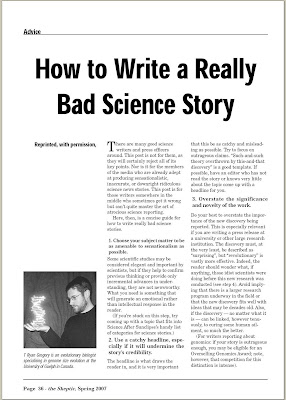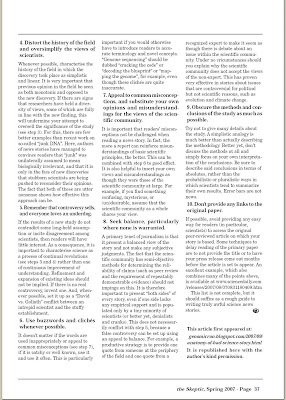I am partially aware of the discussions that have been taking place about having some sort of quasi-official designation that a particular blog post is discussing peer reviewed research. I am all for improving the discourse on blogs when it comes to reporting research. Some readers may recall that I was involved in a minor row (since resolved amicably) over the way a discussion of a paper by some well respected researchers was conducted. I also don’t think blogs count as anything like peer review, and if anyone suggests otherwise, it’s probably because they don’t actually participate much in the peer review process as either an author or a reviewer.
On the other hand, I think blogs are an excellent place to discuss, disseminate, and dissect peer-reviewed articles in a way that makes them more accessible to a broader audience and opens the scientific process to view by non-specialists. My concern is simply that people could mistake what happens on blogs for how the peer review system functions.
There is now a new icon that bloggers are encouraged to use when discussing peer-reviewed research, which was the victor in an open design contest by the Bloggers for Peer Reviewed Research Reporting (BPR3):

According to their site,
Bloggers for Peer-Reviewed Research Reporting strives to identify serious academic blog posts about peer-reviewed research by developing an icon and an aggregation site where others can look to find the best academic blogging on the Net.
I agree with the general notion of letting readers know that peer-reviewed research (vs., say, just someone’s opinion) is being described, but I’m afraid I can’t participate in the program as structured. Why? Because the name, “Bloggers for Peer Reviewed Research Reporting” is ambiguous — is the reporting peer reviewed? No, it isn’t, but this could give the wrong impression. In fact, the logo strongly reinforces this, reading only “Peer Reviewed Research BPR3“.
It’s a decent idea, but the impression it gives in its current manifestation is contrary to my views on the role of blogging in scientific communication.
_______
Update:
Evolgen is promising (threatening?) to publish original, unreviewed research on a blog. Slap the above icon on it, and this would give a very misleading impression to nonexperts. I have to oppose both developments if they are going to, in any way, appear to circumvent or undermine peer review processes. (Update: he will be using this as an educational demonstration, which I fully support… but let’s not have it go beyond that on other blogs).
BPR3 has provided a reply to this post and the comments it engendered, and to their credit they are looking at making some changes to improve the situation. Of course I will be open to participating in the future if I feel it is useful and in accordance with my views on blogging about science. I wish them luck with this.




